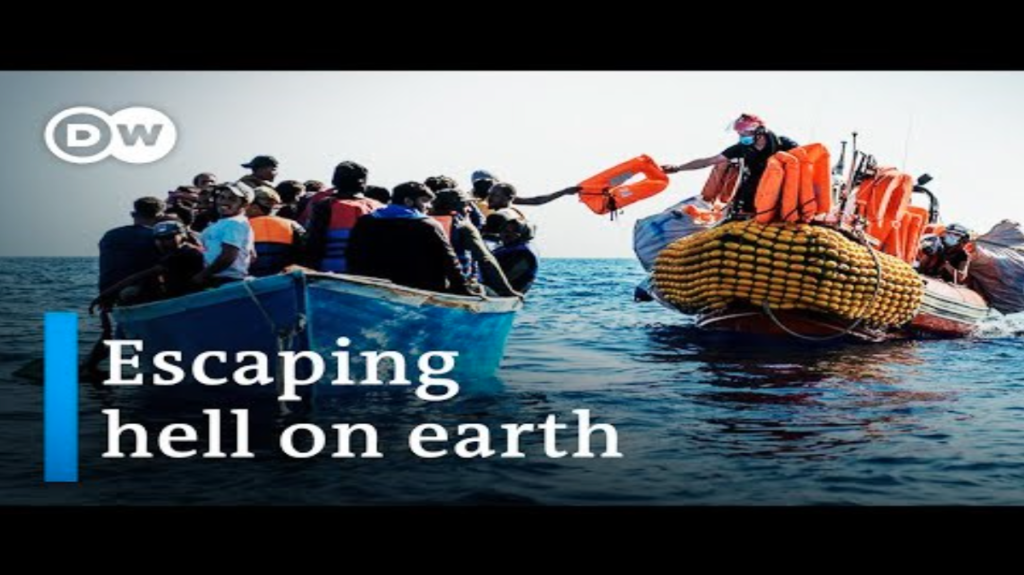Migration crisis in Libya
According to the 2021 IOM February report, 575,874 migrants from over 41 nationalities were identified across Libya. This number is far beyond the government’s capacity to manage, even with the financial assistance offered by the EU (338m euros till the end of 2019). The funding aims to help Libya provide protection and direct emergency assistance to the migrants, refugees, asylum seekers, IDPs and host communities. However, food and water shortage, lack of hygiene facilities, torture, abduction, slavery, illegal detention… remain the most frequently mentioned words among the migration testimonies.
“The torture factory”, an article published by Medici per i Diritti Umani (MEDU), is one recent study that reveal the prevalence of the inhuman treatment of migrations. It analysed 3000 direct interviews with refugees and migration in Libya and described in detail the places, the perpetrators and the methods of violence that are systematically committed to those survivors. It strongly showed how urgent that humanitarian aids and interventions are needed.
Failure of Humanitarian Projects
Stuck in between conflict, the pandemic and the Mediterranean Sea, refugees, asylum seekers and migrants are among the most vulnerable groups with acute humanitarian needs due to the lack of economic support and exposure to physical and mental harm mentioned above. While many humanitarian agencies had done good work, the humanitarian response of this crisis saw several critical failures, especially around: corrupted humanitarian neutrality and impartiality, duplicating efforts in some areas while leaving deadly gaps in assistance in other areas, delay of operations, weak mechanism of accountability of NGO/IO works.

For instance, DW documentary’s newly released video showed the sad fact that during the pandemic time, refugees in Libya who hold UNHCR cards risked his life to reach one of the UNHCR offices but facing a firmly closed door. The office was empty, and no one came to explain the current situation or the following process. Besides, the so-called “urban assistance package” – a package which the UNHCR provided to support refugees and migrants living in urban areas of Libya – received heavy criticises about its insufficient.
Why is Third-party Monitoring (TPM) Needed?
TPM has gained increasing prominence among donors and some larger INGOs who operate in conflict zones or unstable humanitarian contexts in recent years. It is mainly because TPM implementers could provide an independent measurement of the projects that aid agencies have worked on in areas that they themselves cannot access for security reason. For instance, in Libya, 83 per cent of the access constraints are related to bureaucratic reasons. INGOs/IOs are commonly facing visa delays and personnel movement restrictions of the international staffs. On the contrary, TPM implementors and their field staffs are famous for their mobilisation in the “no-go zones”. Also, TPM is seen as a successful project verification tool because of its ability to deliver high calibre data and credible results, reduce project and fiduciary risk, and improve programming design and course correction.
Regardless of these risk transfer and increased access characteristics, the principal value of TPM programs under challenging situations (such as Libya’s migration crisis) lies in its capability to address key programmatic concerns such as corruption and improve accountability to affected populations. An online survey has shown that the international aid agencies are not quite satisfied with their implementing partners’ internal M&E system. Against this background, TPM serves as a part of the mechanism for beneficiary accountability by collecting feedback from the community and holding implementing organisations accountable.
As already mentioned, migrants in Libya found themselves in a desperate situation that they are not able to practice their right of getting enough information, appeal to NGO decision or vote an unwanted project out of a neighbourhood. In this case, neutral and independent data collection methods are needed to understand the cause, the prevalence, and the consequences of these problems. And here, TPM could be a good option to fill in the gap.
About the Author
Ling Li is a Junior Officer in the TPM/Research Department. She is studying her second master’s degree in Monitoring and Evaluation at Sciences Po Lyon. She has 3 years experiences in conducting research on forced migration, modern slavery and child protection.
References
ANSA. (2020) Libya: 85 Percent of Migrants Subjected to Torture. From https://www.infomigrants.net/en/post/23580/libya-85-percent-of-migrants-subjected-to-tortur
DW Documentary. (2021). Libya’s Refugee Camps. From Libya’s refugee camps | DW Documentary
Elshabik, M. (2016) Aiding Libya: the View from the Ground. From https://www.thenewhumanitarian.org/opinion/2016/07/05/aiding-libya-view-ground
Hayden, S. (2019). The U.N. Is Leaving Migrants to Die in Libya. From https://foreignpolicy.com/2019/10/10/libya-migrants-un-iom-refugees-die-detention-center-civil-war/
IOM. (2021). Displacement Tracking Matrix (DTM) Libya’s Migrant Report: Round 35 | January – February 2021
Kelly L., Gaarder, M. (2017). Third Party Monitoring in Volatile Environments – Do the Benefits Outweigh the Risks? IEG World Bank Group.
Medici per i Diritti Umani. (2020). The Torture Factory: Report on Human Rights Violations Against Migrants and Refugees in Libya (2014-2020).
OCHA. (2021). Humanitarian Access in Libya. From https://reports.unocha.org/en/country/libya/card/5NrRodFGsZ/
Sagmeister, E, Steets, J, Ruppert, L. (2015) The Use of Third-Party Monitoring in Insecure Contexts: Lessons from Afghanistan and Somalia. SAVE.


